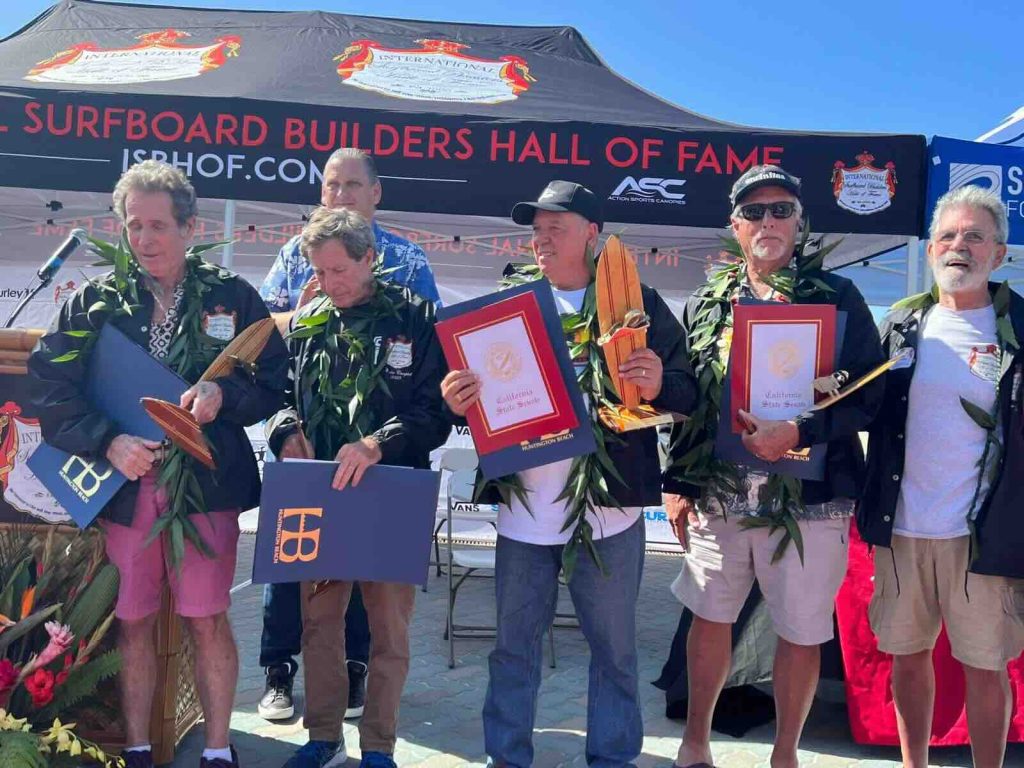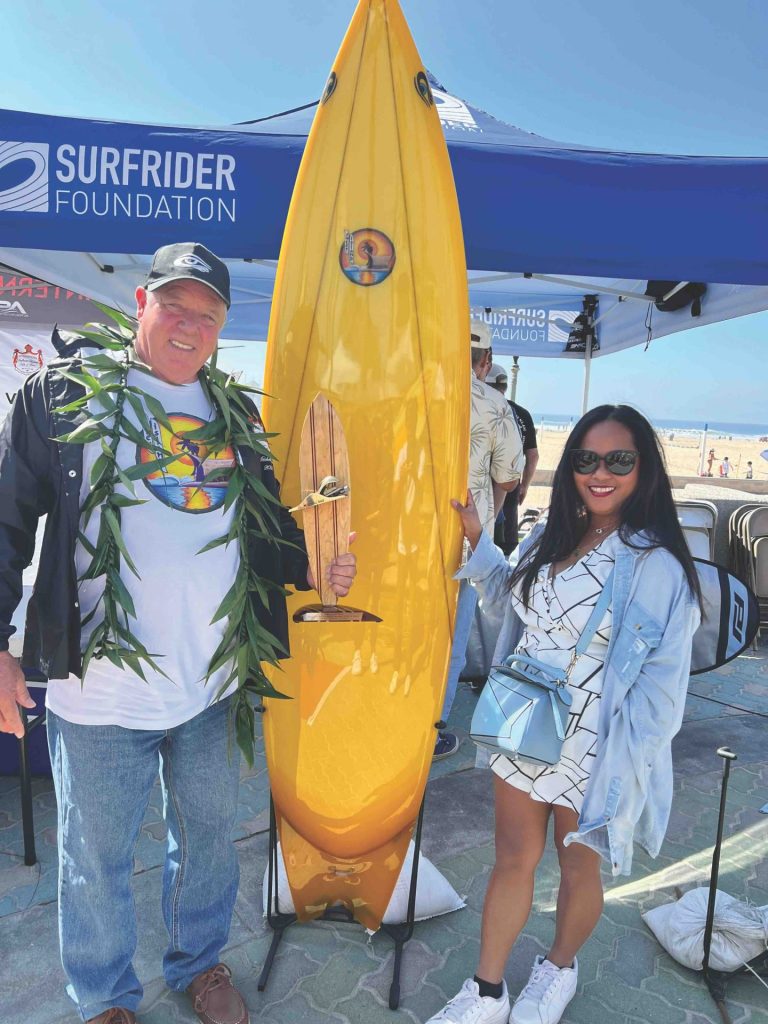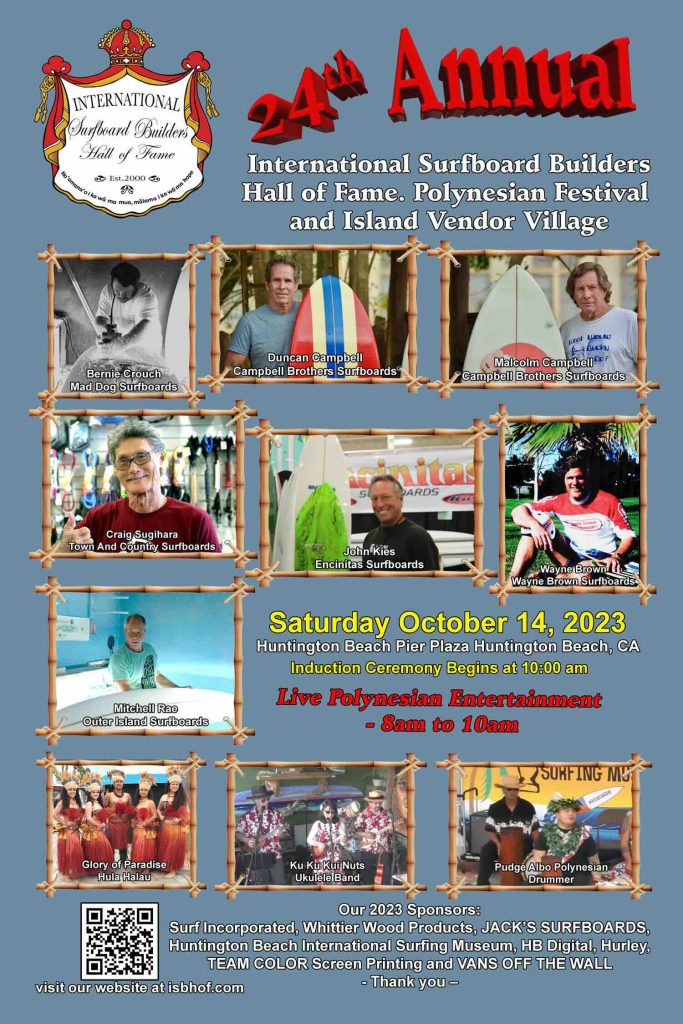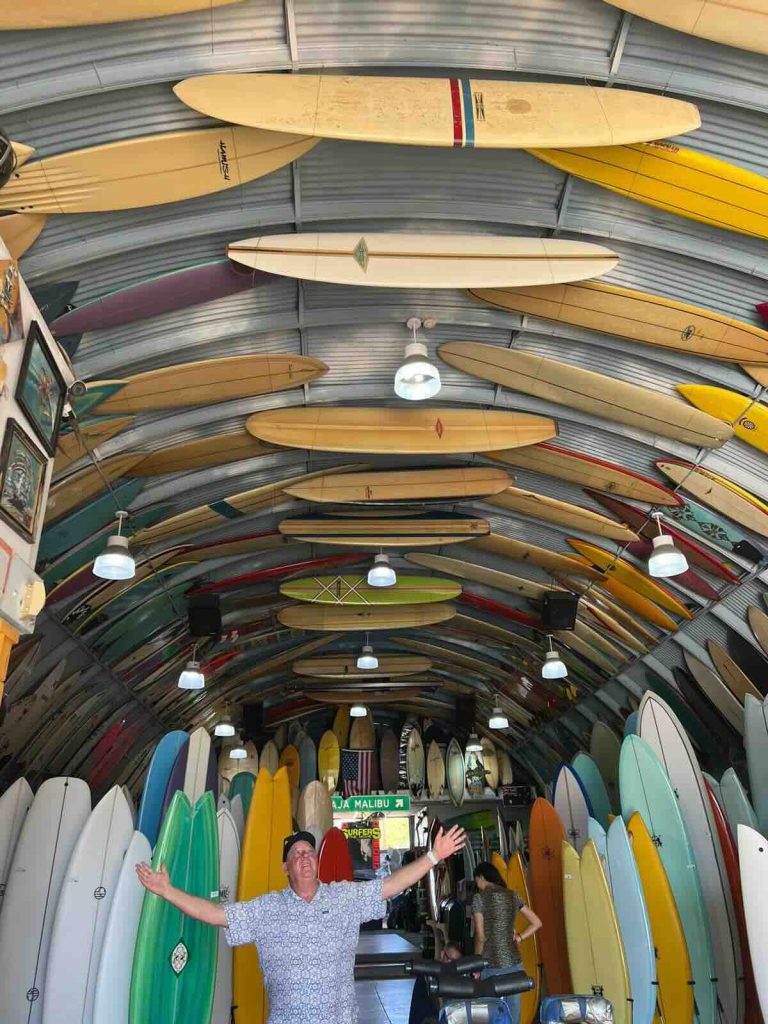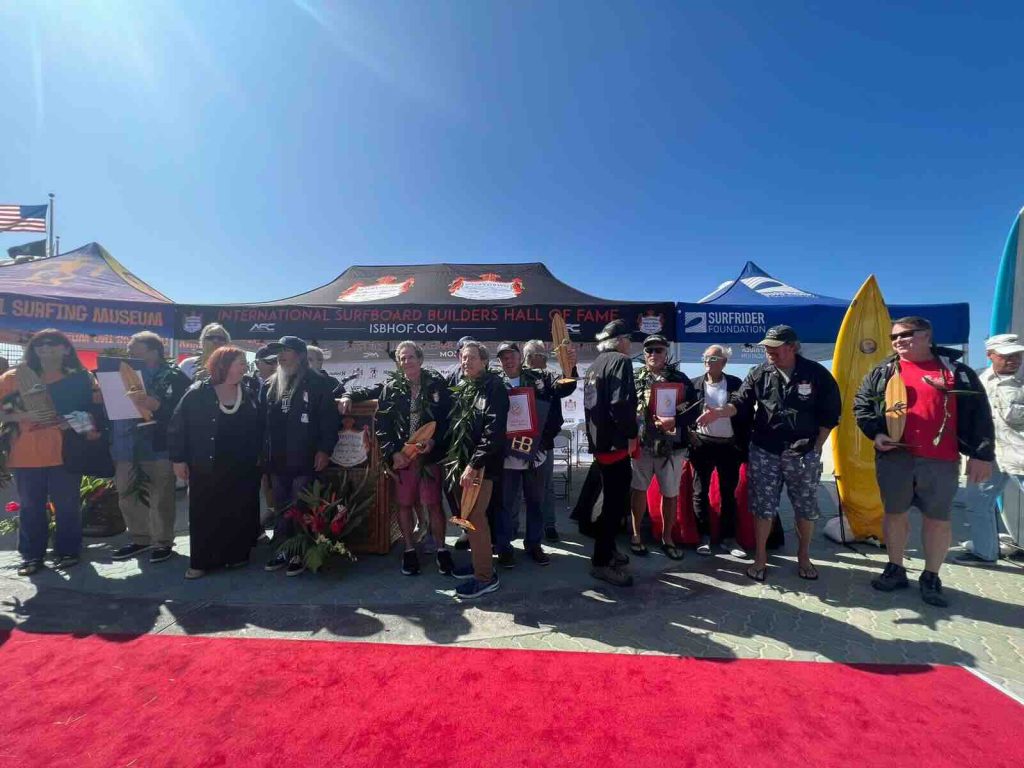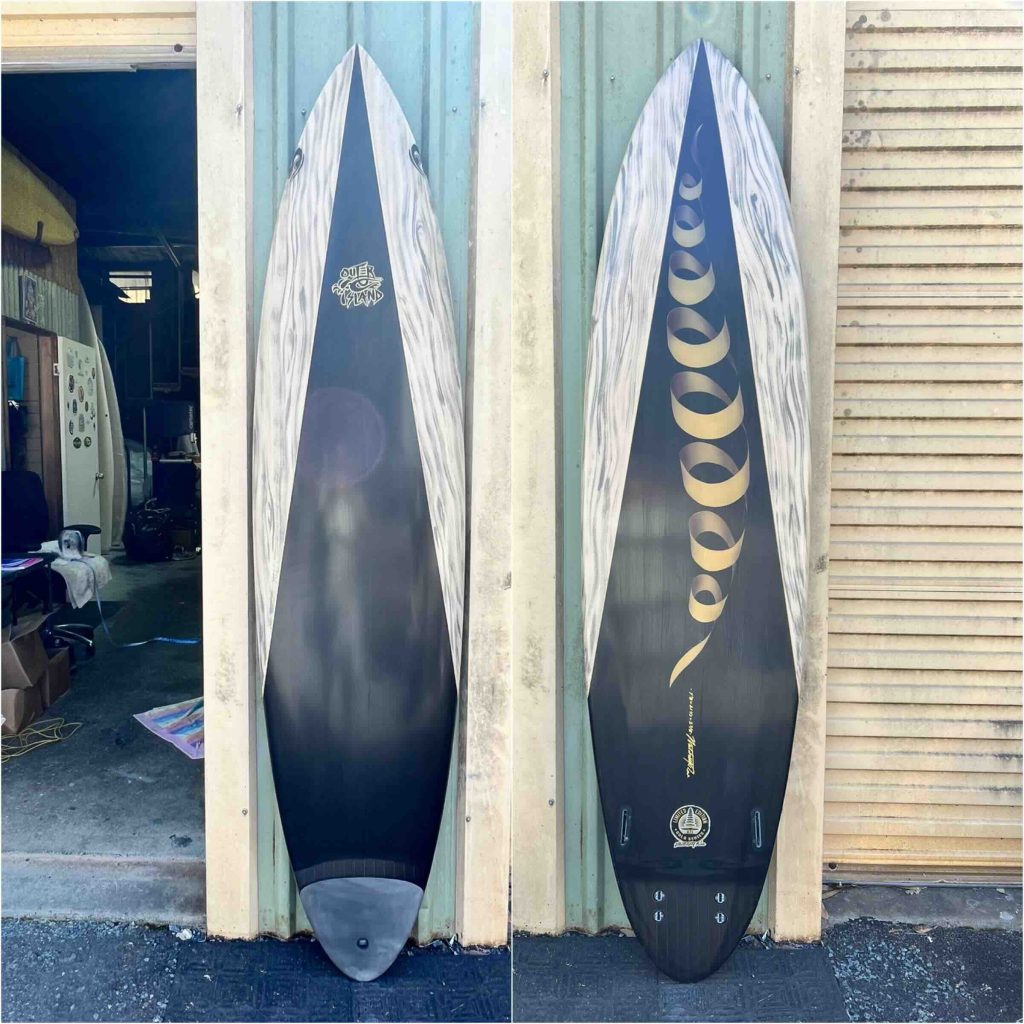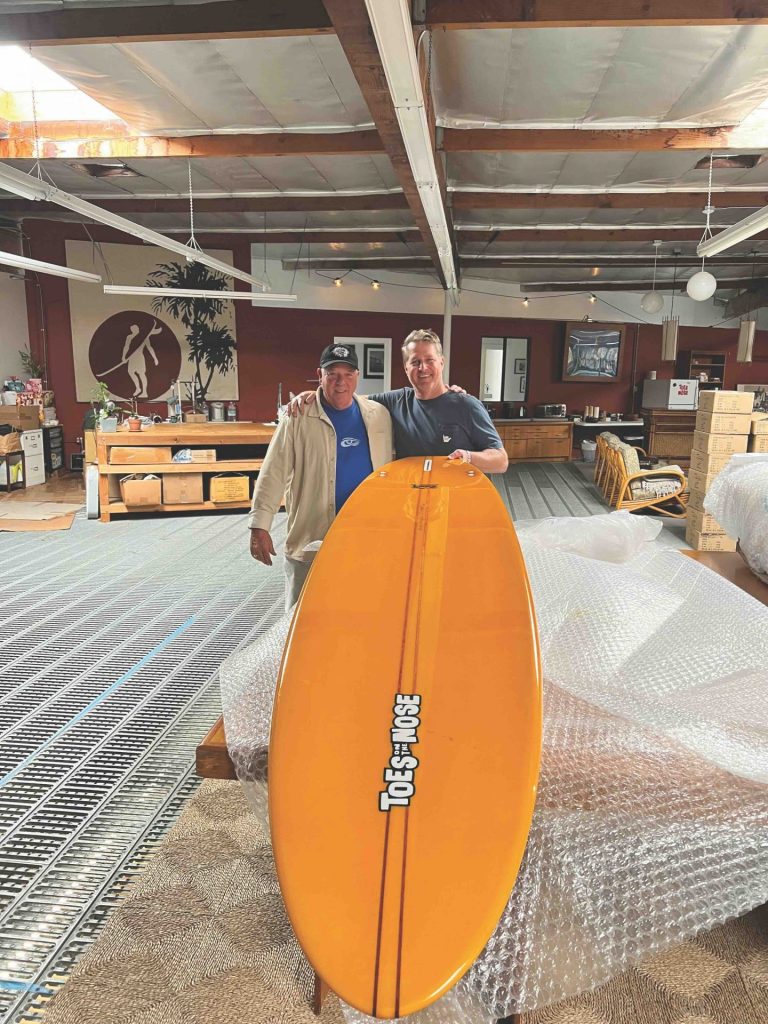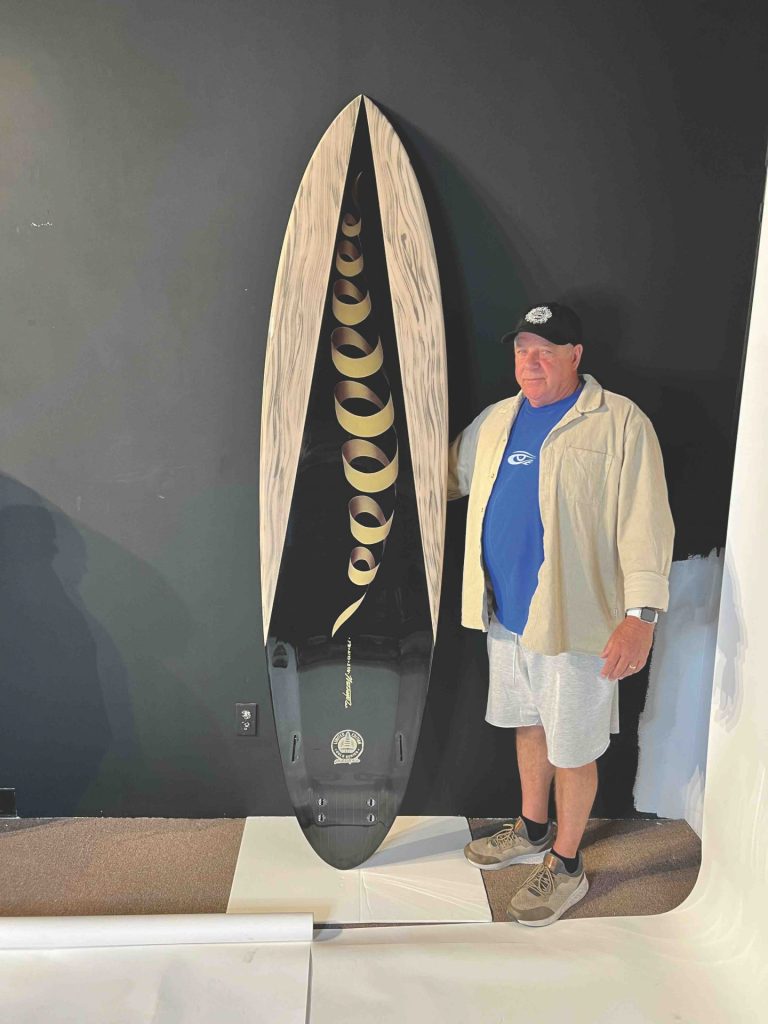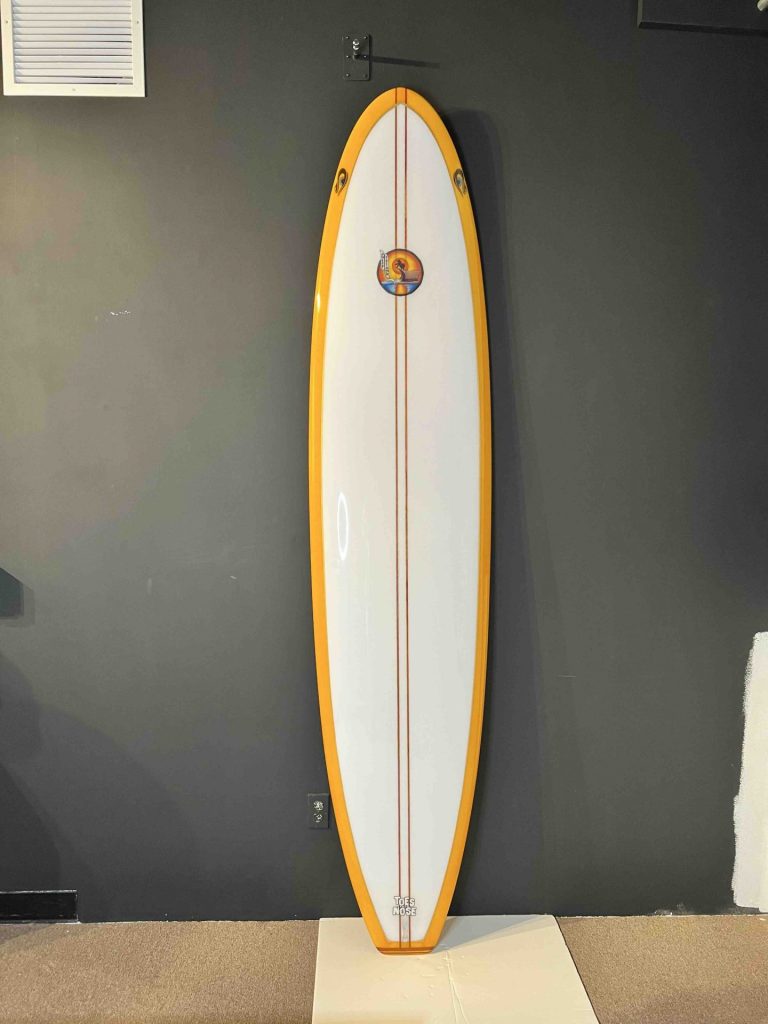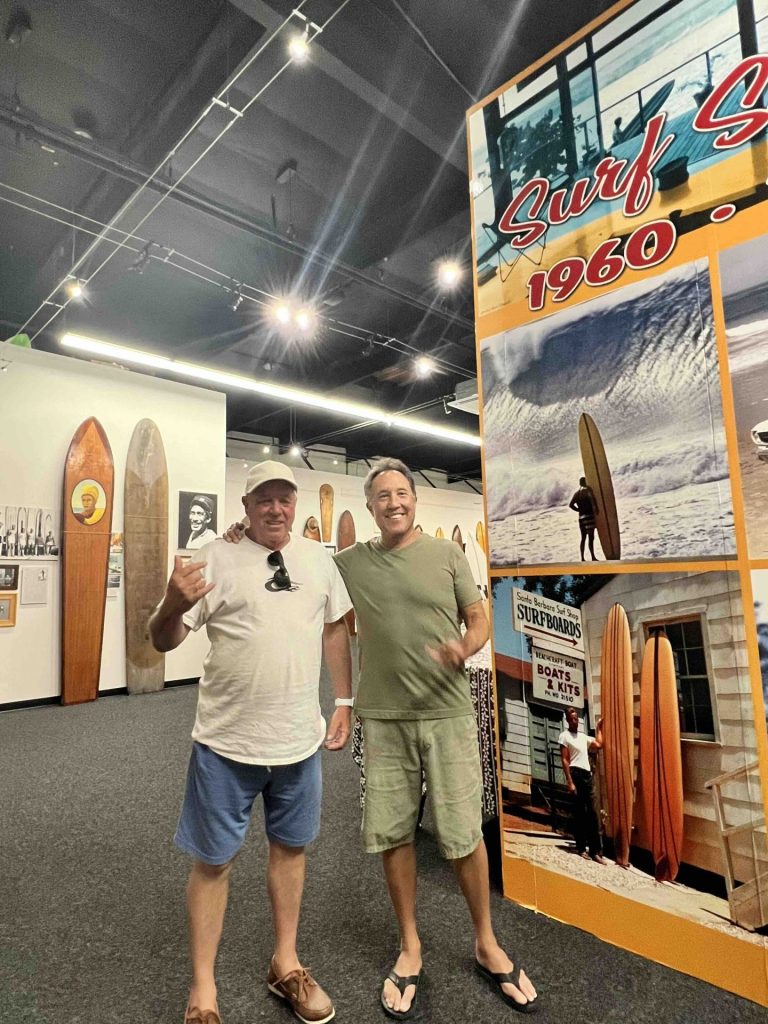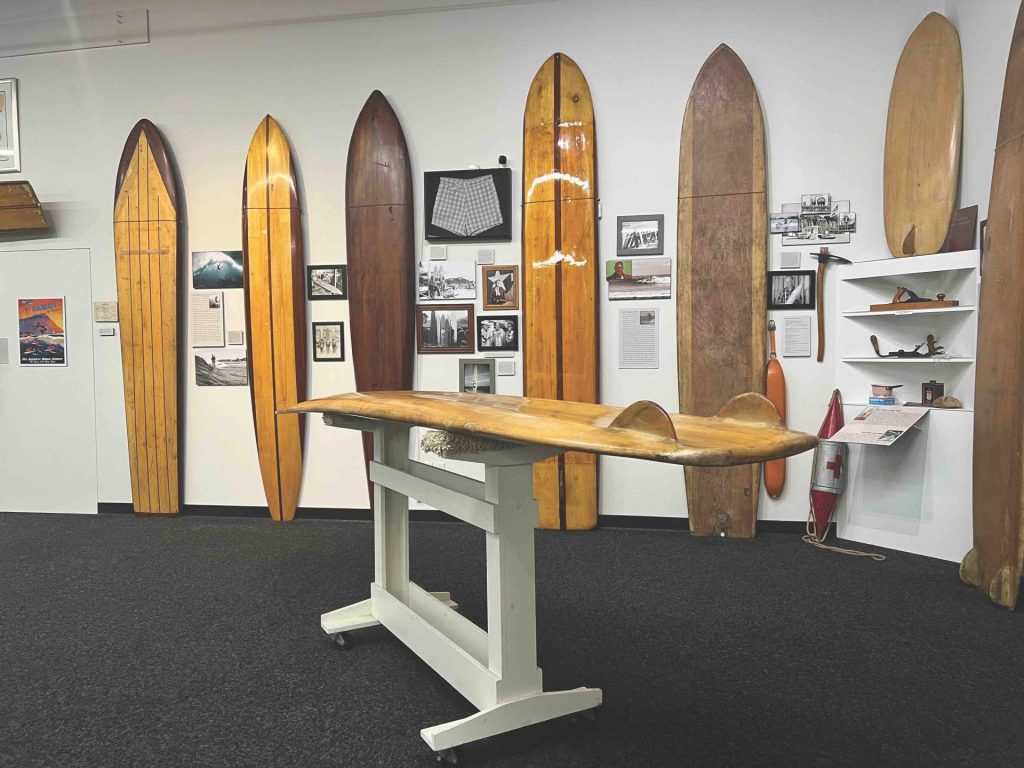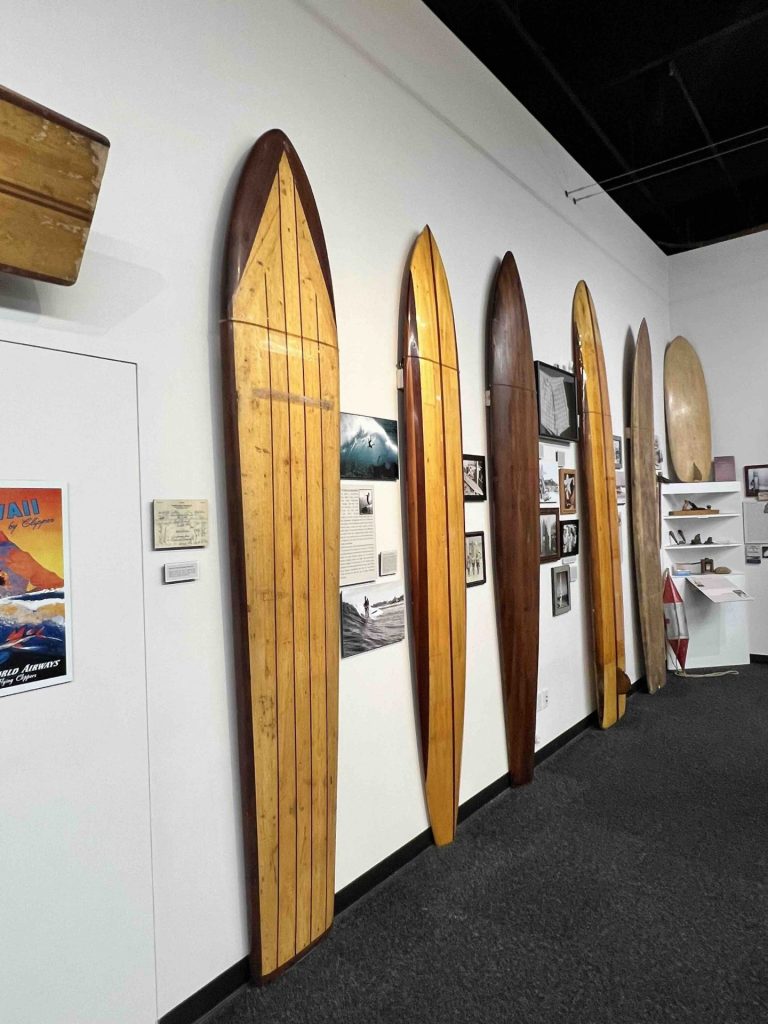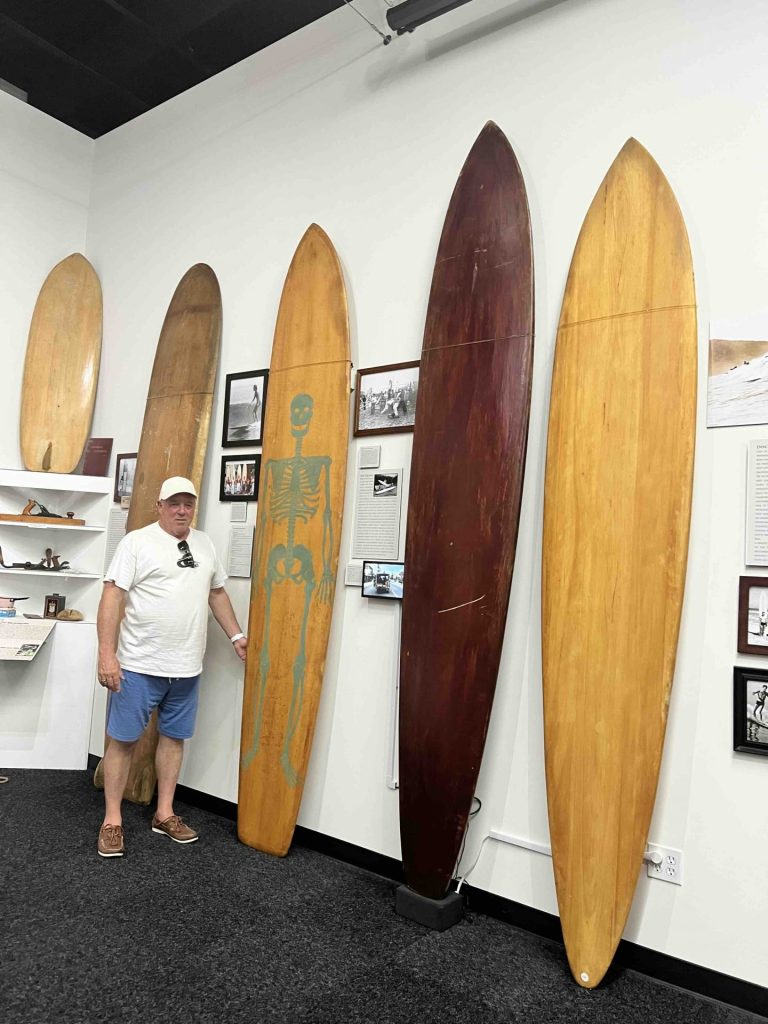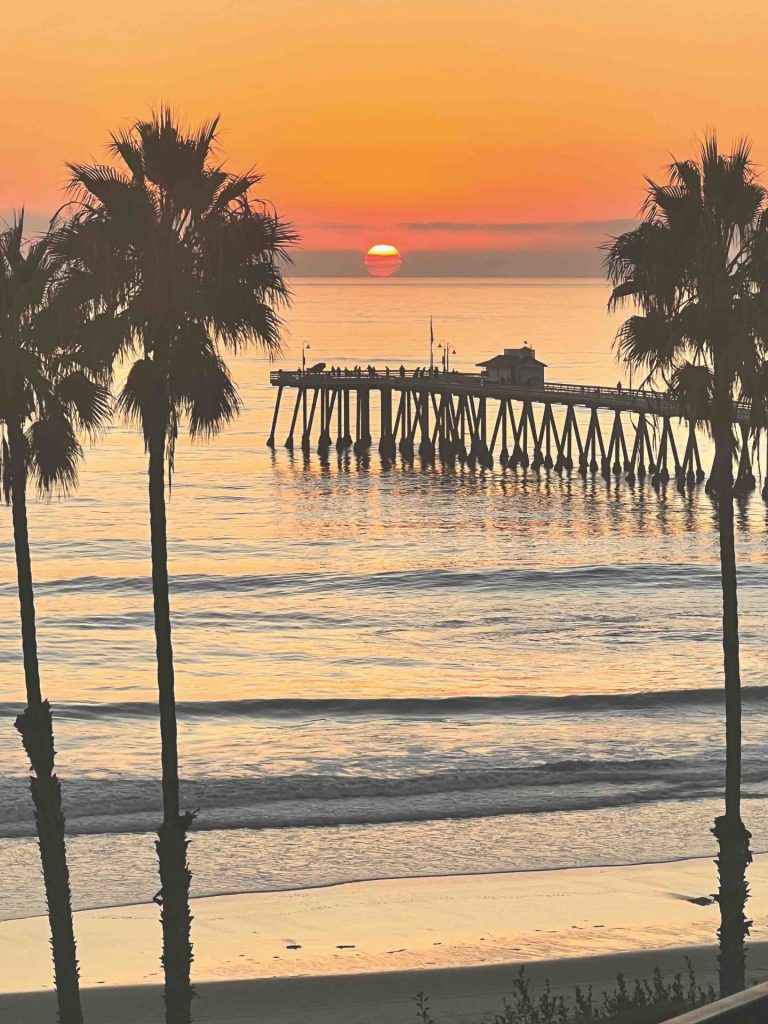We recently caught up with Mitchell on his return from the United States for a quick Q&A just before we went to print.
Being inducted into the International Surfboard Builders Hall of Fame I believe is a fitting reward for your artisanal work at the cutting edge of surfboard design and construction. That’s my opinion however, more importantly, what does the award mean to you personally?
I am truly honoured to be inducted into the International Hall of Fame, an acknowledgement I think of my life’s work. It is the highest honour one can receive as a surfboard designer and builder.
As a grommet, my mates and I would pore over the latest surfing mags from the States, drool over the surfboard ads from Hobie, Velzy, Greg Noll, Yater, Jacobs, Hansen, the photos by Severson and Grannis of Phil Edwards, Dora, Robert August, David Nuuhiwa, Mike Doyle, Rabbit Kekai, Dewey Weber, Donald Takayama, Billy Hamilton and Linda Benson surfing those legendary breaks like Malibu, Rincon, Huntington and The Ranch.
So, for me, this was in a way, a pilgrimage to my surfing mecca, a journey to pay tribute to those who paved the way for my career and lifestyle.
Can you please tell us a little about the event itself and the awards ceremony?
The award was conceived and introduced in 2000 by Bob Bolen and Mike Ester to honour the lifetime achievements of its inductees who are involved in the surfing industry.
The list of inductees is a veritable roll call of surfboard building royalty, from Duke Kahanamoku at the top, through all the greats of California and Hawaii… George Downing, Pat Curren, Phil Edwards, Renny Yater, Dick Brewer, Bob Simmons, Barry Kanaiaupuni, Skip Frye, Greg Noll… the list is stellar, including our own Midget Farrelly, Joe Larkin, Bill Wallace, Barry Bennett, Bob McTavish, Mark Richards and my mate Dick Van Straalen, who nominated me for the award. Too many to list here.
The event itself was held at Huntington Beach Pier, the day was perfect with a blue sky and perfect waves breaking out the front. It was quite a ceremony with many of the previous inductees in attendance.
Hawaiian hula girls and a kahuna blowing a conch set the tone for the ceremonies. This year there were seven inductees, including the Campbell Bros of “Bonzer” fame, Craig Sugihara of Town & Country Surfboards, Californian legends John Kies, Wayne Brown, Bernie Crouch and myself.
Do you feel this accolade recognises, and indeed validates your devotion to a lifetime of board building?
I built my first board when I was 12 under a mate’s house. I rode that board in the first Australian schoolboy’s competition, making it into the finals with Mark Richards. Funnily enough, Mark was one of the first to message me congratulating me on my award.
Back then, around ’67, the only way for me to make a living from surfing was by making boards.
My first job was as a sander at Peter Clark Surfboards in Brookvale. After a year of sanding, I got a gig as a shaper. Not long after, with two friends we started Outer Island.
Midget Farrelly was moving his factory to Brookvale, so we stepped straight into his old factory in a boatshed at Palm Beach.
As the factory grom, I cut and glued blanks with multiple stringers, glassed, sanded, polished, made fins and shaped.
You might say I have paid my dues!
You have employed various technologies and design nuances to heighten the properties of flex in a surfboard, none more so than your ‘flextail’. Some may have scoffed at the relevance of flex in surfboard design, more specifically the flextail component. Does this award give you a wry sense of ‘told you so’ to the naysayers through the years? It must be incredibly satisfying to see this aspect of your design has been recognised on the world stage by your peers?
I think that my contribution to surfing is considerably broader than just the Flex Tail. I did a lot of early work with deep concaves and hard edges in the late 60’s and early 70’s, before they were a ‘thing’. The exploration of variable curves and different ways to achieve controlled flex and flex construction is another. I’m confident in the performance of my designs and don’t need validation by those who don’t ‘get it’.
Through the years you have maintained your ‘cottage industry’ approach to surfboard manufacturing, resisting the temptation to mass produce and make big dollars. Have you ever regretted that decision?
Small independent surfer shapers are the core of surfboard design. I have no regrets about staying close to my roots.
How does it feel to be internationally recognised?
One of the highlights of my trip was a visit to the surfing heritage and culture centre at San Clemente. To quote PT (Peter Townend – Australian surf legend and first IPS/ ASP World Surfing Champion) it is, “the best collection of surfboards on the planet”.
The curator Barry K. Haun certainly knows his surfing history. He gave me a personal guided tour of the surf museum and anecdotes about many of the exhibits.
The collection chronicles the development of surfboard design from the Duke’s solid redwoods, through Simmons, Pat Curren guns for Waimea, original boards by Dale Velzy, Greg Noll, Yater, a turning point down rail board by Mike Hynson, Greenough spoons, McTavish V bottoms.
Every board there is of real significance with its own story to tell. I have been invited to contribute one of mine to the collection.
It gave me a deep sense of perspective on the history of the evolution of surfboard design.
It made me very conscious of what a great honour it is to be included in this role call for the International Surfboard Builders Hall of Fame.
It is undeniably an honour well deserved in our opinion. Mitchell deserves his place in the sun.
